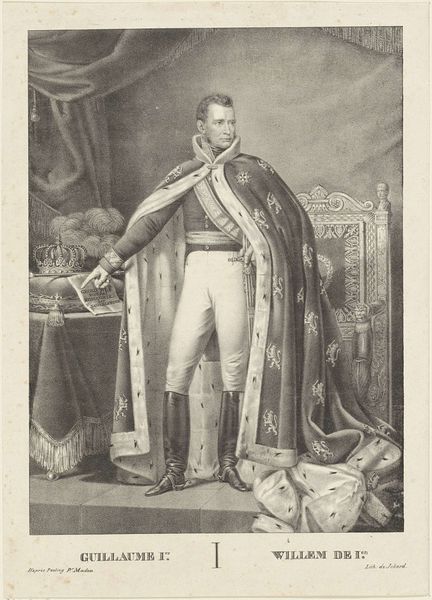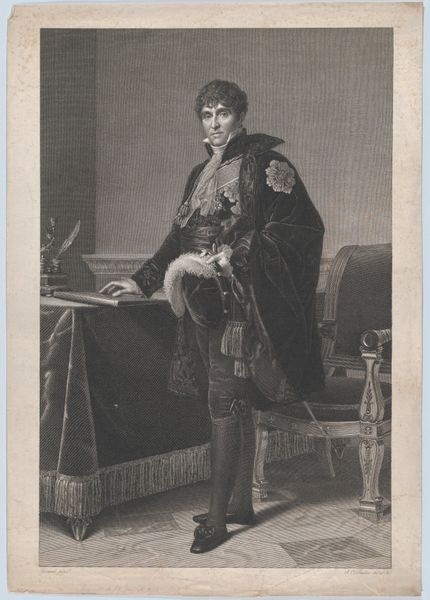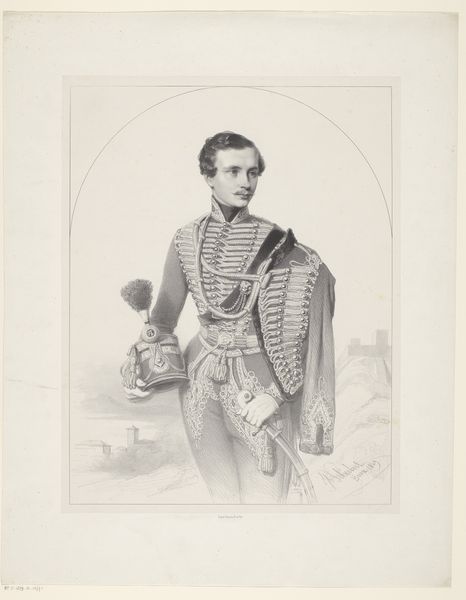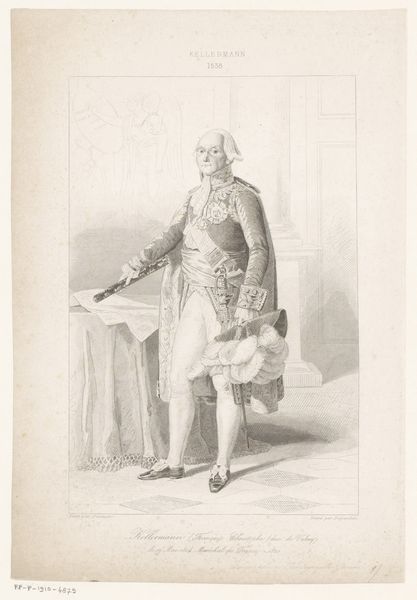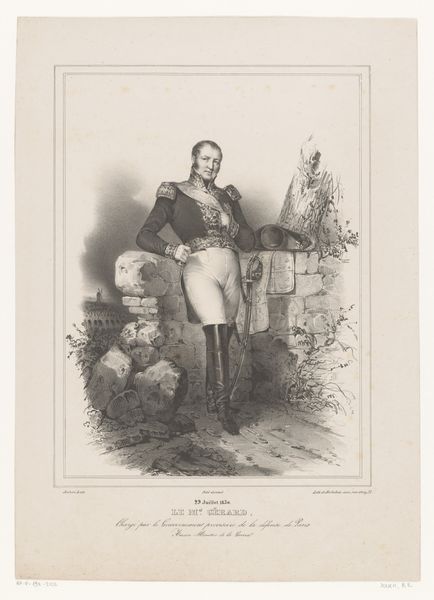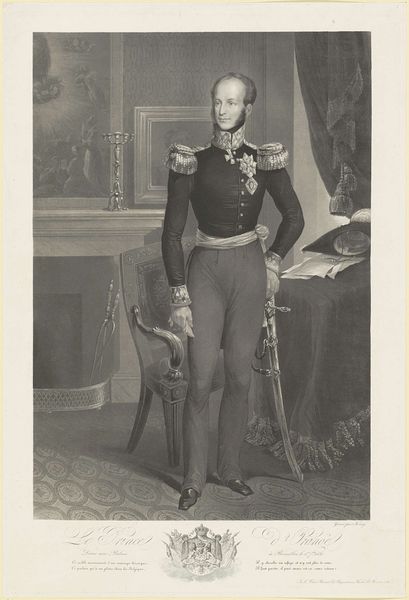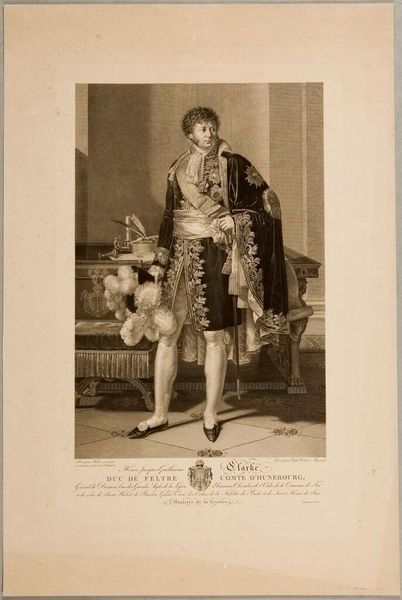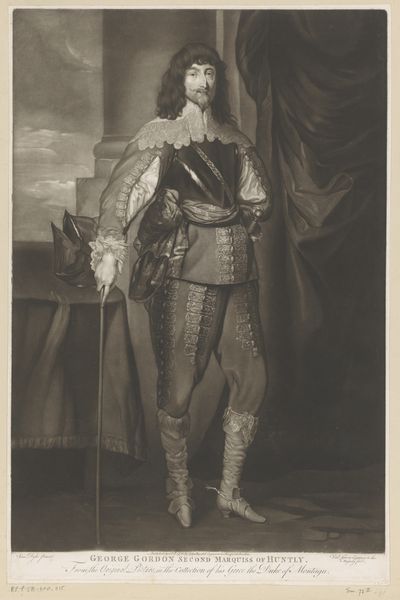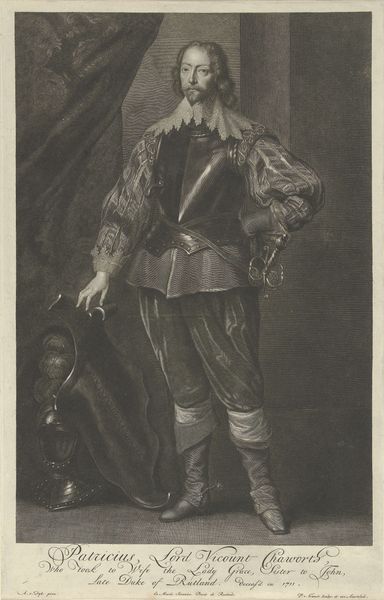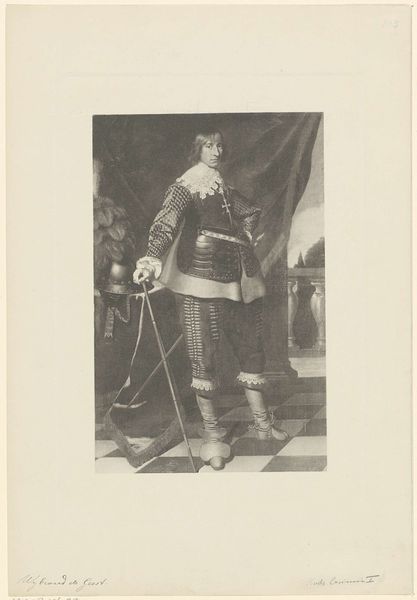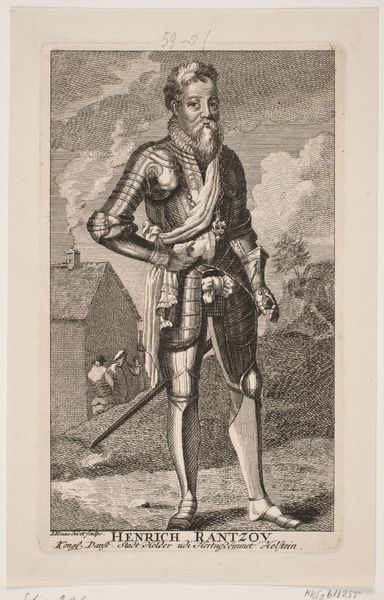
engraving
#
portrait
#
neoclacissism
#
history-painting
#
academic-art
#
engraving
Dimensions: height 702 mm, width 491 mm
Copyright: Rijks Museum: Open Domain
Giuseppe Longhi created this portrait of Eugène de Beauharnais using engraving, a process reflecting the period’s interest in precision and duplication. Longhi was working in the late 18th and early 19th centuries, a time of significant political upheaval in Europe, marked by the rise and fall of Napoleon. Here, Eugène, Napoleon’s stepson and a key figure in his empire, is depicted in a manner that blends aristocratic elegance with military authority. His elaborate attire and the classical backdrop speak to a desire to legitimize Napoleonic power by linking it to historical empires. Yet, Eugène’s somewhat softer features and poised stance hint at the constructed nature of identity and power. The detailed rendering of his garments, juxtaposed with his bare legs, creates an interesting tension between vulnerability and dominance, embodying the complex negotiations of identity during this revolutionary era. This portrait invites us to consider how power is performed and perceived. It's an intimate yet formal study of a man navigating a world in transition.
Comments
No comments
Be the first to comment and join the conversation on the ultimate creative platform.
